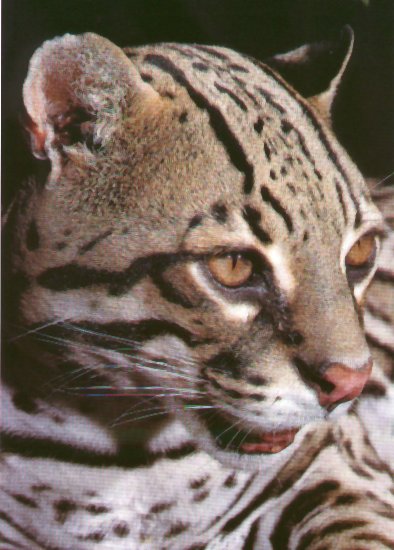
Ocelot

Order: Carnivora Family: Felidae Genus & Species: Felis pardalis
Ranges from the USA-Mexico border region south through Central America and across most of tropical South America, except the central Andes, to northern Uruguay and northeastern Argentina. It is long hunted by the fur trade for its beautifully patterned coat, and is now listed on Appendix 1 of CITES (Convention on International Trade in Endangered Species).
| Habitat The ocelot is one of the most widespread species of small cat in South and Central America. It can be found in tropical and mangrove forests, savannah grasslands and brush country, usually at altitudes below 1200m. Ground cover is the common element, helping to conceal this small hunter both when it stalks prey and when it hides from larger predators. |
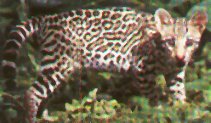 |
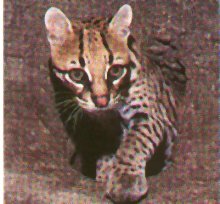 |
Behaviour Like most cats the ocelot is generally solitary, and occupies a home range of 2-18 sq km. Ranges often overlap with those of neighbours of the opposite sex, but never with those of the same sex. Established pairs may share a territory but do not hunt together. Active at night, the ocelot spends most of its hunting time on the forest floor, but it is also a capable climber and swimmer. It spends much of the day resting in tree hollows, branches and dense thickets. |
Feeding Part of the reason for the ocelot's wide distribution is its highly adaptable diet. It eats almost anything it can catch. Most of its victims are rodents weighing less than 1kg, such as rats and mice, but it also preys on young deer and peccaries, monkeys and rabbits. The ocelot also hunts birds, snakes, lizards, fish and crabs. The ocelot catches most of its prey by making skilful use of ground cover. |
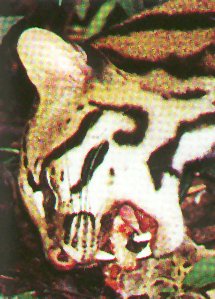 |
| It silently stalks its target, holding its head steady and slinking
its body ever lower as it approaches. The ocelot lunges in a single leap, and is
usually swift enough to catch those animals that try to bolt. With the victim pinned
under its forepaws, the cat then asjusts its grip and delivers a lethal bite to the nape
of the neck, severing the spinal cord. |
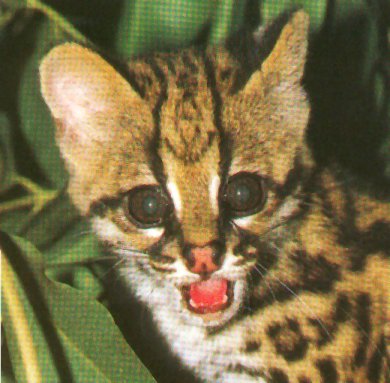 |
Breeding In the breeding season the female scent marks and utters yowling calls as a signal to neighbouring males. Ten weeks after mating, she settles in a concealed den and delivers one or two fully furred but helpless kittens, each weighing about 250kg. Almost constantly attended for the first few days by their mother, the kittens initially feed solely on milk. But as several weeks pass and the young gain in strength, both parents start to bring solid food to the offspring. |
| The adults teach the young how to stalk and overcome prey, priming them for a solitary life of hunting. After two years the juveniles go their separate ways. |